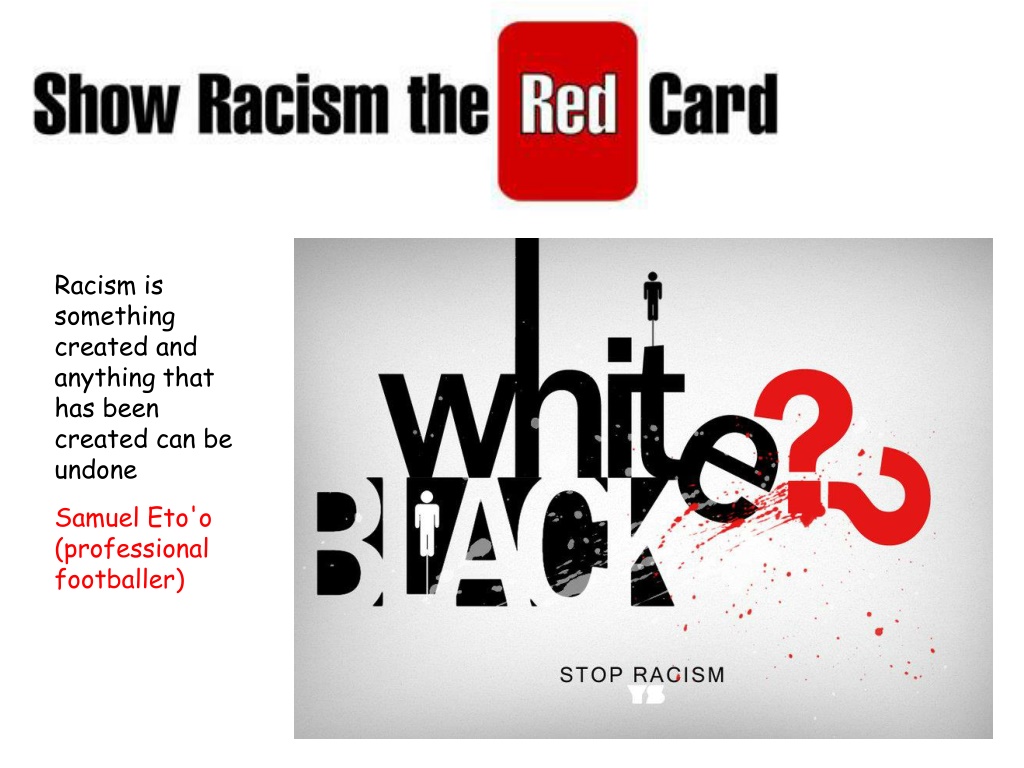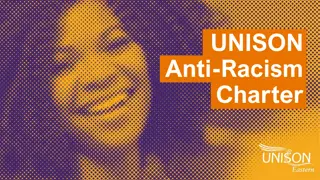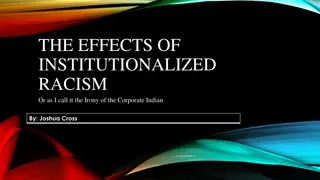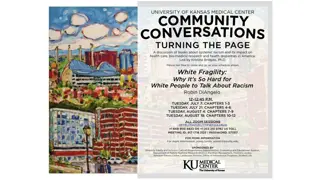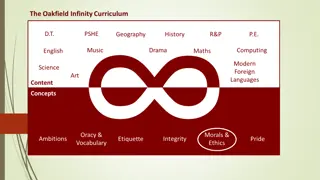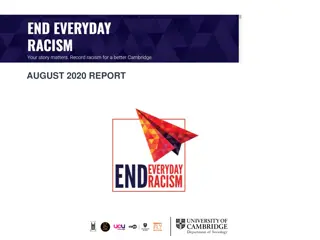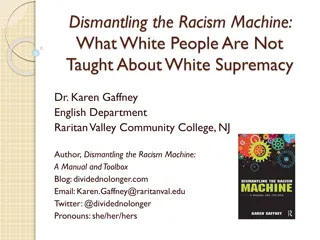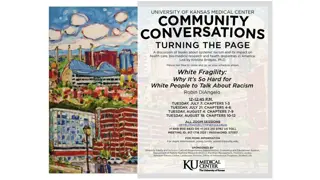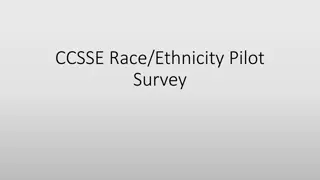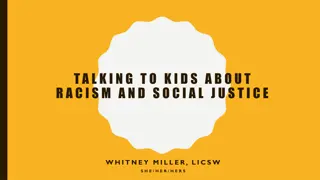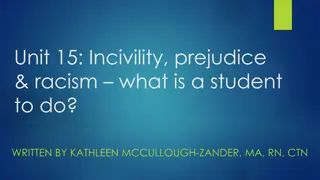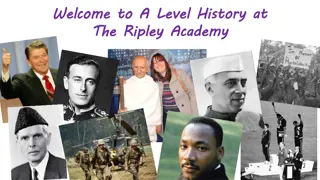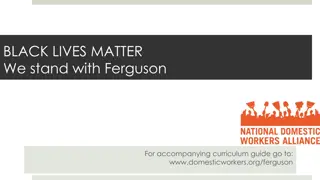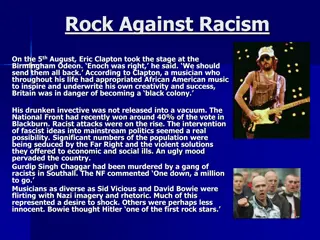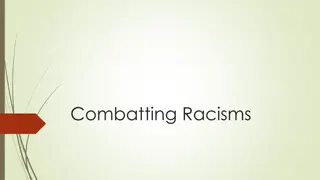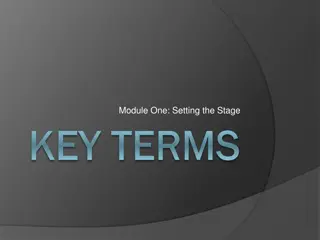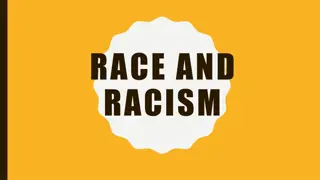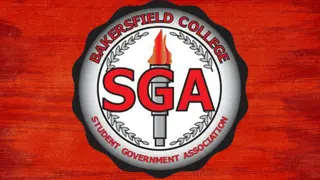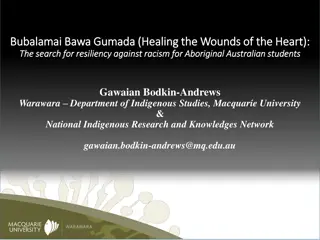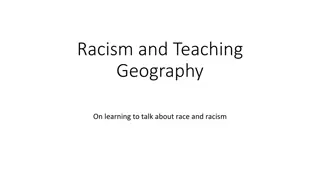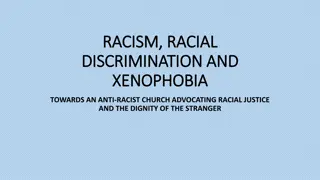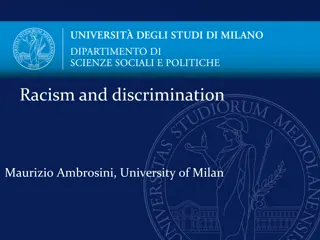Understanding Racism: Origins, Forms, and Impact
Racism is a created ideology used to oppress individuals based on perceived differences. It manifests in various forms, from verbal abuse to physical violence. The belief in distinct human races has been debunked by genetic evidence, affirming our common humanity. Historical examples, like the Holocaust and civil rights movements, illustrate the devastating consequences of racist beliefs and actions.
Download Presentation

Please find below an Image/Link to download the presentation.
The content on the website is provided AS IS for your information and personal use only. It may not be sold, licensed, or shared on other websites without obtaining consent from the author. Download presentation by click this link. If you encounter any issues during the download, it is possible that the publisher has removed the file from their server.
E N D
Presentation Transcript
Racism is something created and anything that has been created can be undone Samuel Eto'o (professional footballer)
When talking about racism what does the word race mean? In the past people believed that there were different races of people, who shared common physical features such as skin colour, hair type, facial features, character and skills. Racists have used this idea to label certain races as different and inferior. However we now know through genetics that there is just one species to which we all belong and that people of all colours and appearances have a similar potential. The physical differences between people around the world are external not internal and are caused by the adaptation of people over long periods of time to different environments.
What is Racism? Racism is the belief that people who have a different skin colour, nationality, religion or culture are inferior. Racist ideas have developed over thousands of years and have been used to justify the oppression of many different groups of people.
What forms does racism take? Racism can take many forms, ranging from verbal abuse to outright physical attacks to a person or property. Racism can also be non- verbal, for example denying a person from a minority ethnic background a job or entry to a restaurant or shop, purely on the grounds of their colour, nationality or religion.
Look at the four pictures on the next slide. With a partner discuss how you think the people in the photos are connected to racism.
During the Second World War, the Nazi party killed around six million Jewish people, one million of which were children. As well as the Jewish, they also killed another million people including gypsys, homosexuals, and the disabled. Hitler and the Nazi party believed that these groups of people were biologically inferior. Rosa Parks was an African- American who in 1955 refused to give up her seat on the bus for a white customer. At the time black people were only allowed to sit at the back of the bus and had to give up their seats if a white person needed it. Rosa s refusal started a chain of events in America which contributed to the change in civil rights. 15 Year old Johnny Delaney was beaten to death in Liverpool by 2 boys (aged 15 and 16) because he was a gypsy. One of the boys stamped on Johnny s head with both feet and said he deserved it because he was only a gypsy Stephen Lawrence was a black British teenager who was stabbed to death while waiting for a bus. The attack was believed to have racist motives.
